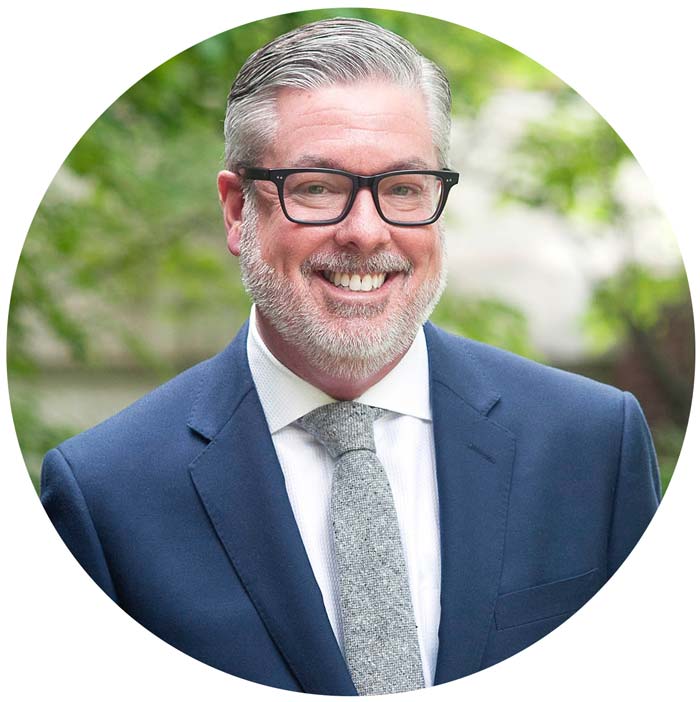President's Message

Drexel University is driving to reach the next level of excellence, and 2017 was the year in which some of our most important work came into focus. Drexel’s continued strong showing in national university rankings, a second year of record-high student retention, the enrollment of the largest freshman class in our history, and the launch of our $750 million fundraising campaign brings us to an inflexion point. In short, we see Drexel on an upward arc of success.
And that is by design. We’re a University whose students, faculty, clinicians and professional staff believe in the power of working hard, and working smart. So, a couple of years ago, we began investing more heavily in student financial aid. We put the word out far and wide to prospective students. High school visits ramped up: Guidance counselors at hundreds of schools, who previously had no relationship with Drexel, learned about our unique blend of experiential and classroom studies. Bending the curve sharply on affordability, we held tuition steady and overall charge increases to under 2 percent. Meanwhile, we added 100 tenure-track faculty lines and will dedicate future fundraising efforts to people and programs.
In addition to being the largest ever, the approximately 3,200 new undergraduates in the freshman class for 2017 are highly qualified and more likely to remain enrolled and go on to earn their degrees. They hail from across the region, the nation and internationally, and, in their diversity, they fulfill the promise of inclusion and opportunity that is central to our educational mission.
Academic achievement continues to be the watchword at Drexel, which The Wall Street Journal and Times Higher Education ranked in the top 40 among private research universities. And more Drexel students and alumni were offered Fulbright scholarships than ever before, with eight receiving the prestigious award in the spring — further evidence of our global engagement.
As we look to the future, we’re encouraged that Drexel’s high-caliber research continues to grow, with new awards for research up 6 percent and such highly competitive awards as the Wellcome Trust ($12 million) to study urban health, and from the U.S. Department of Education ($30 million) to support urban education in West Philadelphia. In November, we announced the establishment of a Fabric Discovery Center, which leverages the University’s national leadership in smart-fabric manufacturing through our participation in the Advanced Functional Fabrics of America.
Our student-athletes continue to excel both on the field, with title-winning performances, and in the classroom, with 3.33 grade-point averages. This academic year, more than 450 student-athletes will compete in 18 varsity sports and another 9,000 students will participate in club or intramural sports.
Our commitment to inclusive economic growth in Philadelphia is centered around plans for Schuylkill Yards, now seeing its first phase come to fruition with the creation of the 1.3-acre Drexel Square just steps from Amtrak’s 30th Street Station — the sixth square in Philadelphia that will join the five designed by William Penn. In addition, we expanded our cradle-to-career efforts with the addition of a second, fifth-grade class at the Science Leadership Academy Middle School, the public school housed at our Dana and David Dornsife Center for Neighborhood Partnerships. The Dornsife Center itself is a hub of activity and community outreach.
Drexel’s campus also continues to grow with the addition of new amenities: a high-quality preschool at the newly built Vue32 development, which includes 164 new market-rate apartments; and The Study at University City, bringing high-quality, full-service lodging and dining to the Drexel campus.
The pride we share in Drexel University is built upon progress made in all these areas of University life — progress that is only made possible with the support of the Drexel board of trustees under the leadership of its chairman, Richard Greenawalt. And our faith in the future only grows when we see the progress that our efforts have yielded. “What is now proved was once only imagined,” the English poet William Blake told us.
I am proud to share this report with the Drexel campus community, alumni, and the University’s many friends and allies in the wider community. As you read on, I hope you will see how we’re focused on creating an exciting future — whether it’s training next-generation educators for urban classrooms, learning entrepreneurial skills by actually running businesses, conducting life-saving research, making medical breakthroughs, or improving our community through civic engagement.
Sincerely,

John Fry
President